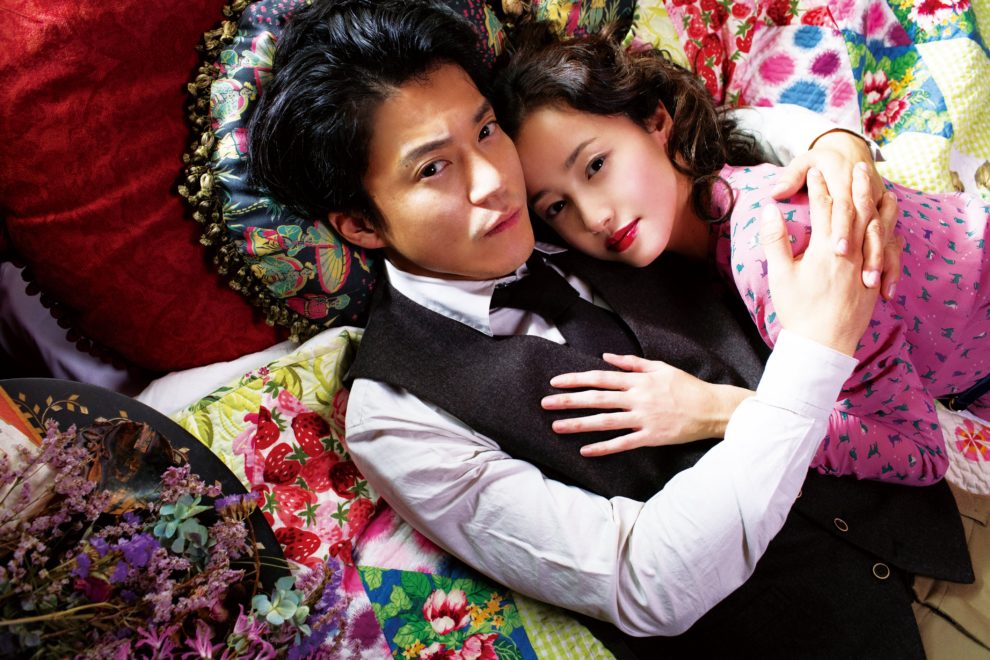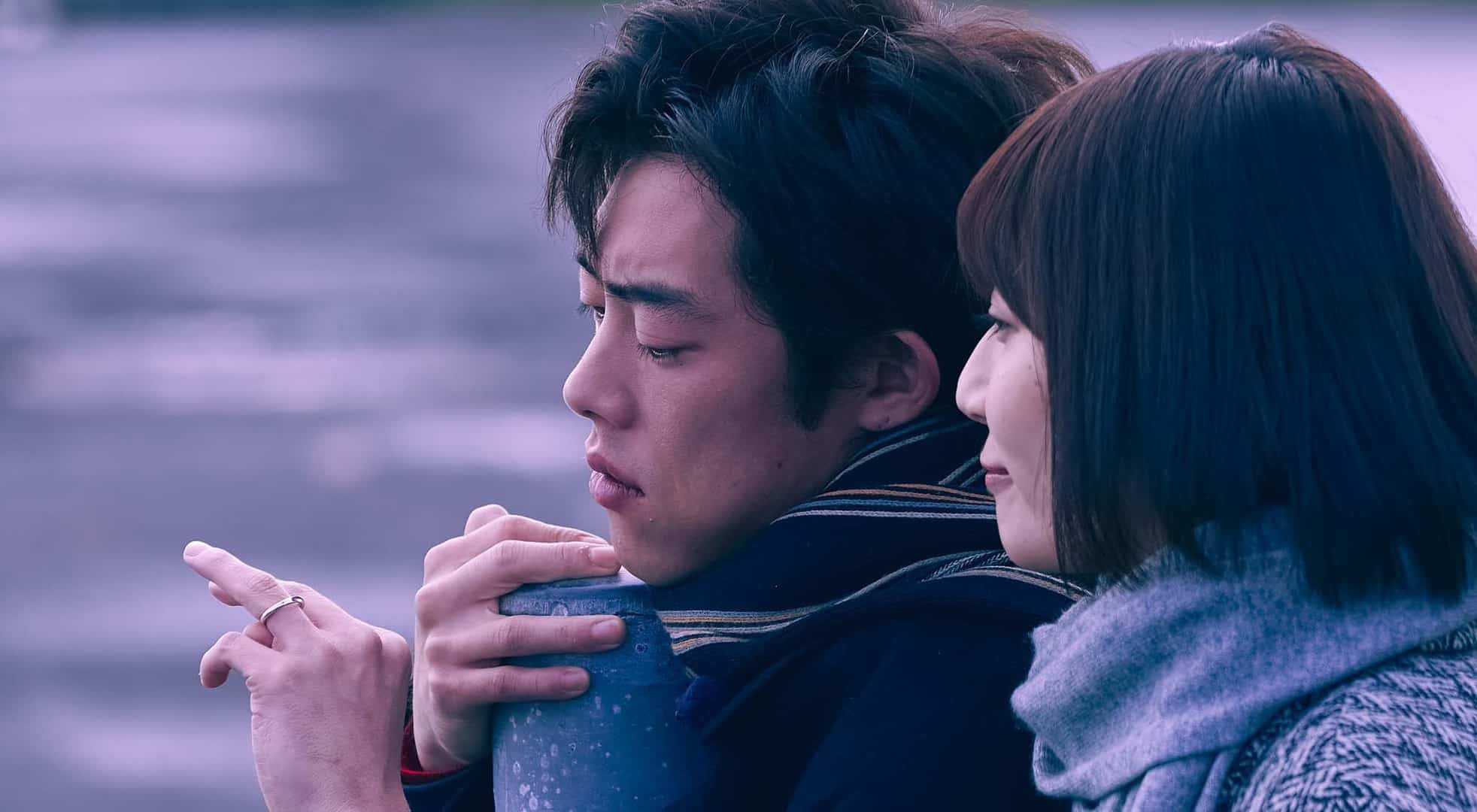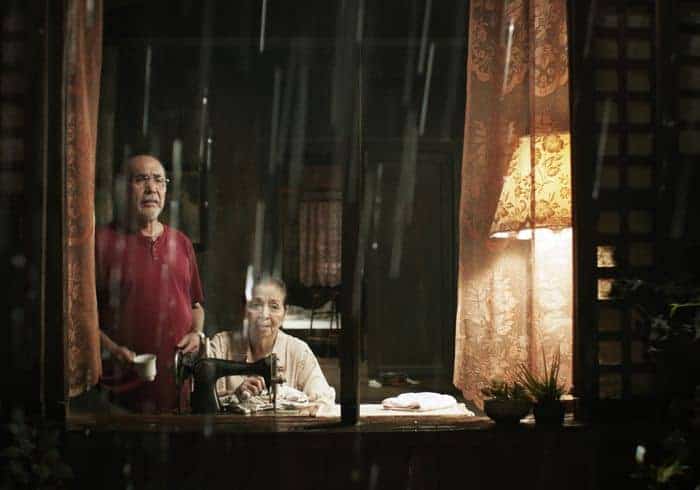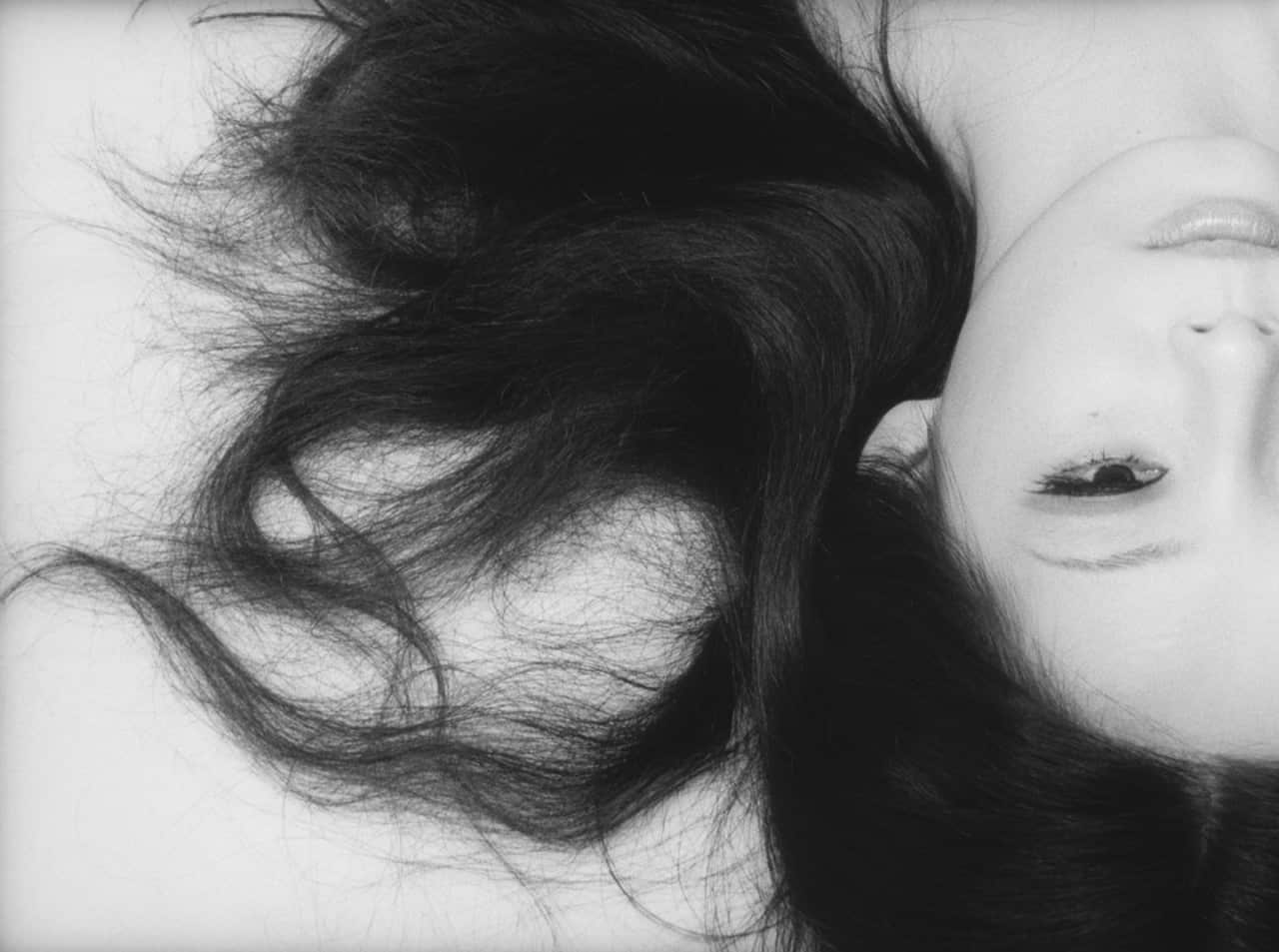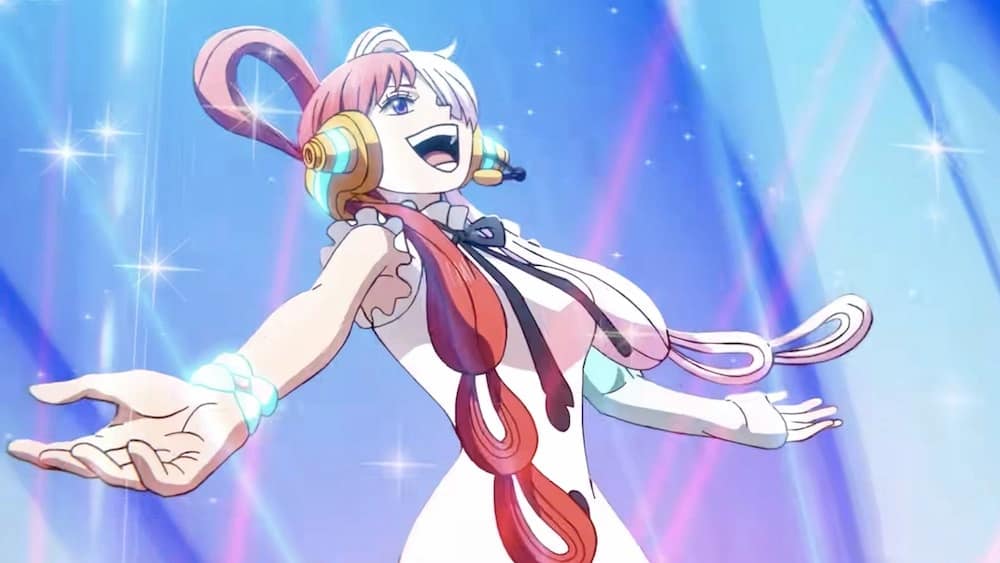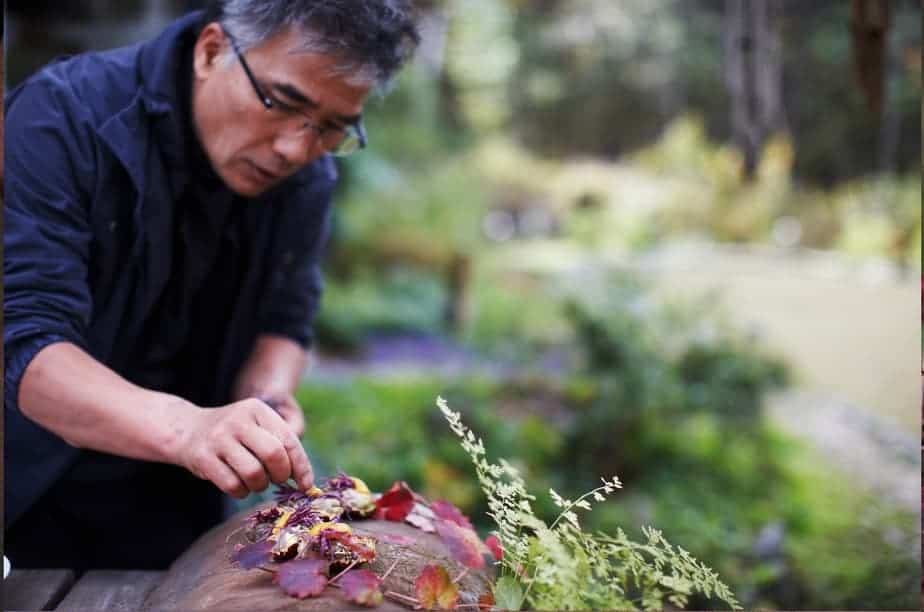Osamu Dazai, born Shuji Tsushima, is one of the most well known figures in Japanese literature, with several hit novels, including “The Setting Sun” and “No Longer Human”. The latter, his last work released posthumously after his suicide, is considered to be his crowning glory and stands as the second highest-selling Japanese book of all time. Dazai himself had a very eventful life, dotted with his alcohol abuse, womanising ways and several suicidal attempts, all of which have been the inspirations of many representations in various forms of written and performed art, including films, manga, anime and more. The latest to tell his story is “Helter Skelter” director Mika Ninagawa. “No Longer Human”, as its Japanese title “Osamu Dazai and the Three Women” suggests, follows the latter part of his life and the three key partners that not only influenced some of his best works but also led to his ultimate demise.
“No Longer Human” is screening at Fantasia Festival
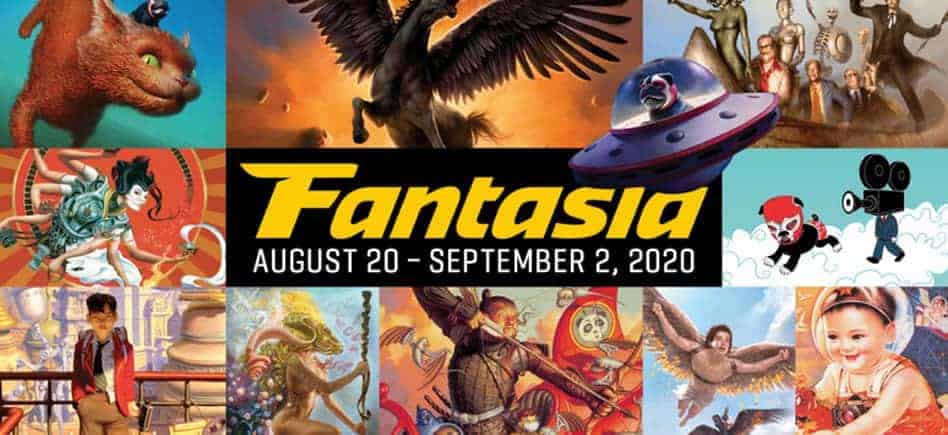
Opening on one of his many failed suicide attempts, in which he loses his lover but himself survives, we are then introduced to Osamu Dazai's domestic situation, to his alcohol and cigarette abuse and to his intense womanising. His long-suffering wife Michiko tends to her two little kids while pregnant with a third, and also takes care of a drunken Osamu if he does return home some nights, turning a blind eye to his affairs because she knows that is what fuels his talent. A tryst with a wannabe-writer fan Shizuko results in a pregnancy and a massively successful book “The Setting Sun”, for which he takes inspiration from Shizuko's personal diary. But that still doesn't stop him getting in a relationship with Tomei, who is initially reluctant to fall for this womaniser but eventually gives in to his handsome looks and evident talent. This relationship, in particular, gets rather toxic and as his dependence on alcohol, cigarettes and the fairer sex increases, the substance abuse begins to take a toll on his health, while his relationships start affecting his life and work as a whole.
Instead of a well-rounded biopic, Ninagawa, working off a script by Kaeko Hayafune, decides to focus on Dazai's relationships with these three women, who were in fact part of a long line in his life, and how they affected his life, both personally and professionally. Dazai was a man that took influence from the ladies in his life for his works, portraying them either exactly as his muses or their polar opposites. In that sense, readers and contemporaries think that the character in “Villon's Wife” is based on his own wife when in fact Ninagawa purports that it's the exact opposite of her, “The Setting Sun” is said to be a novel of his and Shizuko's affair, and his last great work “No Longer Human” stemming from the toxicity of his relationship with Tomei. The depiction of these relationships is admittedly quite well done and the emotions brought forth very raw and convincing.
However, as a biopic, “No Longer Human” ultimately feels a rather shallow look at the life of a person who, quite frankly, was a pretty unlikeable one. The romanticism of the character is also quite misplaced. The film wants us to believe that he was a genius torn between love and his evident talent, when in fact he was responsible for ruining the lives of all three women depicted here, even if Tomei herself might've been a bit masochistic. While it does focus on the substance abuse, there is no mention of his depression, suicidal tendencies or the bevy of other ladies. Its refusal to fully explore Dazai's equation with his male contemporaries, like Tatsuya Fujiwara's Ango Sakaguchi and Kengo Kora's Yukio Mishima, is also annoying.
At face-value, the narrative does seem quite misogynistic, but deep down, it is fairly feminist, with all three female characters living lives on their own terms, despite the extreme ill-treatment at the hands of Dazai. Even if Michiko is suffering, she chooses to stay and be the mother and father for her children, the decisions she takes being her own. Shizuko may be a jilted lover, but she gets exactly what she wants from Dazai. Tomei, meanwhile, has a tremendous hold on Dazai, even refusing to let him die of tuberculosis and insisting that their deaths be on her terms. The narrative tries to make Tomei the scapegoat for his demise, but let's not forget that he was himself highly suicidal and had many failed suicide attempts previously, including a few together with his lovers and ex-wife.
However, from the first frame to the last, “No Longer Human” is a thing of beauty, with everything from the cinematography (by “Shoplifters” fame Ryuto Kondo), production design, costumes and the music too being complete eye and ear candy. It would not be hyperbolic to say that this will easily be among the prettiest films you'll see in recent times. Blooming sakura and vast amounts of bright, colourful flowers of the most beautiful variety populate the screen, both outdoors and indoors, the latter of which show fine use of neon for its lighting. Colourful, richly decorated kimonos set against equally colourful interiors never fail to amaze and take your breath away. Even a simple scene of Michiko walking down a short flight of stairs amidst gently falling snow takes on an otherworldly beauty. Jun Miyake's music is another important element of the project's overall appeal. Though having an overbearing presence at times, it suits the picture very well and, while sticking to the more traditional piano and brass for the most part, also ventures into the experimental territory, as seen in the scene where Tomei finds out about Osamu's child with Shizuko, for example.
This beauty permeating through the project extends to the good-looking cast as well. Shun Oguri lost a fair amount of weight to play the floppy-haired Dazai and he looks the part. However, where his dialogue delivery manages to find the right balance between likability and abhorrence for the character, his performance never goes beyond posturing intently now and then. The ladies of the story, though, fare better. Rie Miyazawa really impresses as the struggling Michiko, showing the conflict between her love for her children and her own happiness, with a scene where she plays with her children while trying to hide her tears being a highlight. Fumi Nikaido as Tomei also scores well, bringing her love for Osamu and her own insecurities to clash effectively. Erika Sawajiri plays an important part of the first half as Shizuko, with her monologue about romance and love being standout, but sadly doesn't feature much as the story goes along.
“No Longer Human” sadly doesn't quite gel as a biographical work about Osamu Dazai. Oddly enough though, if one were to look at it as an unrelated story about a writer and the women in his life, it manages to acquit itself. In any case, it would be criminal to not watch it and miss out on the breathtaking beauty that is on display here.


